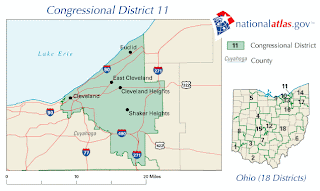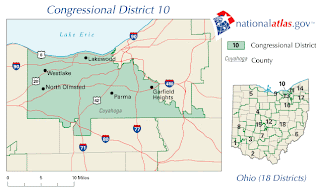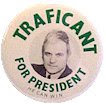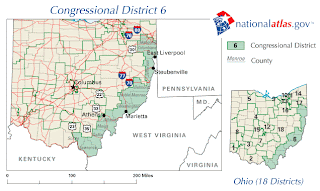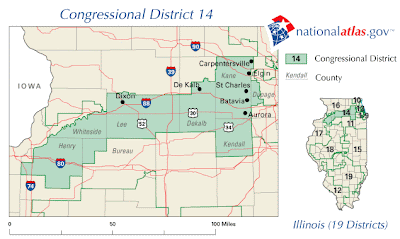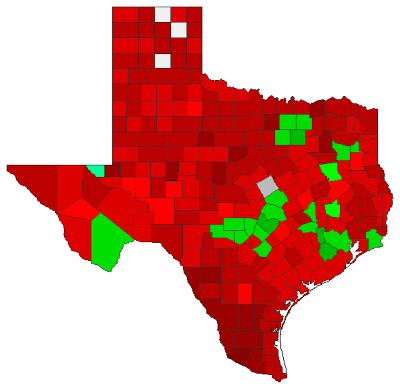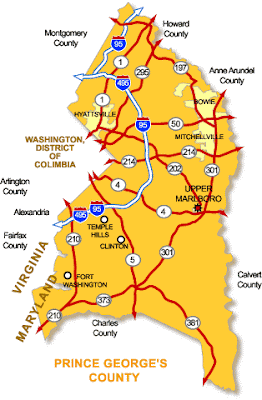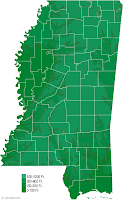
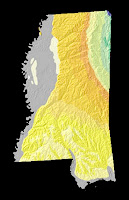
In preparing to go through the Mississippi returns, I returned to an old classic of American political science, V.O. Key’s 1949
“Southern Politics.” A monumental study, Key examined the eccentricities and peculiarities of the politics of the south, state by state. In doing so, he provided not only a historical account of the cast of characters who came to dominate southern politics, but also a model against which to test the current politics of the region. Because the south was a one party system prior to the 1968 realignment, its politics was defined by factionalism driven by individuals rather than party or ideology.
In writing about Mississippi, Key wrote about the role geography—and the economy it spawned—played in shaping the states politics. Allow me to quote at length:
“Mississippi politics may be regarded, if one keeps alert to the risks of oversimplification, as a battle between the delta planters and the rednecks. It is a battle of diminishing intensity, but the cleavage between the planters of the delta and the rednecks of the hills has persisted for half a century and even yet appears from time to time…
Along the River, from Memphis to the Yazoo at Vicksburg stretches a flat shelf of fertile alluvial soil about two counties wide. This plain is the domain of the delta planters, masters of huge plantations cultivated chiefly by Negro sharecroppers. Behind the towering levees that restrain the River, the delta produces a million bales of cotton a year—in some years a tenth of the American crop—and ranks as one of the great cotton producing regions in the world…
The “redneck,” “peckerwood,” or “peckerhead” inhabits another world. His “hills”—the highest altitude is around 700 feet—run from the northern end of the state and occupy roughly its eastern half, broadening out almost to the River in the south and petering out in the pine forests of the coastal region. A rich prairie, an extension of Alabama’s black belt, breaks into the hills at about the center of the state’s eastern border and provides the base for a small, rich agricultural region, whose sympathies run generally with the delta. The “hills” are supposed to be the habitat of the redneck, the white tenant farmer, the lesser white farm owner. Here the soil is not so fertile; the hardest labor produces only the most miserable livelihood.”
In this environment, Key wrote that while both planters and hill folk agreed on the race question, the planter class was more likely to take a more moderate tone and propose more rational means of dealing with the issue. Hill country politicians were much more likely to demagogue the issue and appeal to their constituents' more base prejudices. Given the economic disparities between white planters and hill country residents, this perhaps isn't too surprising.
Above I have included two maps of Mississippi—one geological and one topographic. In these maps you can see the Delta and hill country represented visually.
Here is a map that shows each county name, to help follow along.
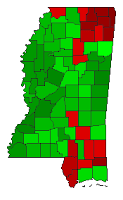
So what does this all have to do with yesterday’s vote (
full results here)??? As I wrote on Monday, the African-American population in the state, being so large, would almost guarantee an Obama victory. I wondered, though, how the concentration of the African American vote would affect Obama's margins across the state. Now that we’ve got some numbers, we can answer the questions I raised. We’ll look first at
Congressman Bennie Thompson’s district, the 2nd. This is the area Key wrote about above, the Delta. While we no longer have sharecroppers and subsistence labor like a few generations ago, the African American population that resides in these counties are the ancestors of those Key wrote about. These counties have the highest African American populations in the state. Looking at the vote totals, we see that these counties went overwhelmingly for Obama. District wide, Obama won
76-23% and in fact won every single county. In most of these counties his vote totals were between 70 and 80%. In the map to the left Obama's counties are in green (Clinton counties in red) and the darker the shade, the higher the vote percentage. The delta counties are the westernmost third of the state running north/south.
Then, notice another part of Key’s description: “A rich prairie, an extension of Alabama’s black belt, breaks into the hills at about the center of the state’s eastern border and provides the base for a small, rich agricultural region, whose sympathies run generally with the delta.” These would be counties such as Lowndes, Oktibbeha, Noxubee, Winston, Kemper, and Neshoba. If it’s so much like the Delta, both in terms of geography and population, we might expect big Obama votes. That’s exactly what we see. Outside of the Delta, this is the part of the state where he did best.
Now what about Clinton? On Monday, I speculated about
Congressman Gene Taylor’s 4th District, which is more white and includes the coastal cities of Gulfport and Biloxi. Given the politics of this area, I suspected Clinton might do better here, especially with her campaign’s recent efforts to refocus on white working class voters. Looking at the results, we see that despite losing the state by a large margin, Clinton did very well in Taylor’s district. District wide, Obama won by a slim
50-49% margin. Of the 15 counties there, Clinton won a majority, including over 60% of the vote in Hancock, Pearl River, George, Greene, and Lamar counties.
If we look at other parts of the state, we see that Clinton did best in those counties Key called the “hill” country. In the northeast and north central part of the state, she won a concentrated area of 11 counties, most with big margins (Benton-55%, Tippah-71%, Alcorn-76%, Tishomingo-82%, Prentiss-74%, Union-70%, Lee-54%, Itawamba-80%, Pontotoc-64%, Calhoun-53%, and Webster-60%). Or, to put it more crudely, she seems to have won over Key’s “peckerwood” vote. If this area—still to this day—retains a more working-class identity, culture, and outlook on the world, we can perhaps understand Clinton’s appeal. From the
exit poll data, we know that Clinton did extremely well among white voters in the state, including those low on the socio-economic scale.
So, after looking at these numbers, one must ask—Is geography destiny??? The correlation between the maps above and the vote totals is quite striking.



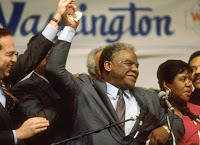
 For our second stop in Pennsylvania, we'll focus on the congressional district in which
For our second stop in Pennsylvania, we'll focus on the congressional district in which 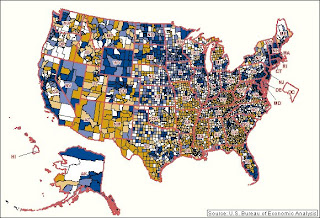
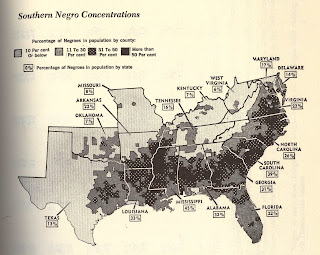


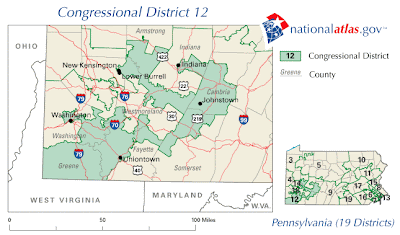 With a few weeks until the Pennsylvania primary, I thought we’d take some time to take a tour of the state and sample a bit of its political history and demography, especially in areas that I think will prove crucial to each candidate’s success.
With a few weeks until the Pennsylvania primary, I thought we’d take some time to take a tour of the state and sample a bit of its political history and demography, especially in areas that I think will prove crucial to each candidate’s success.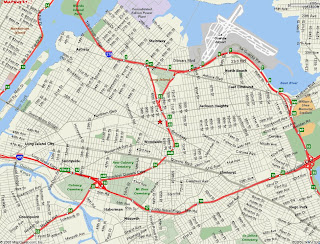



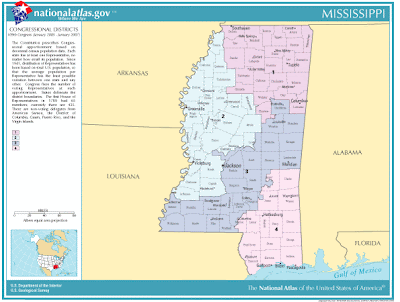

.jpg)
